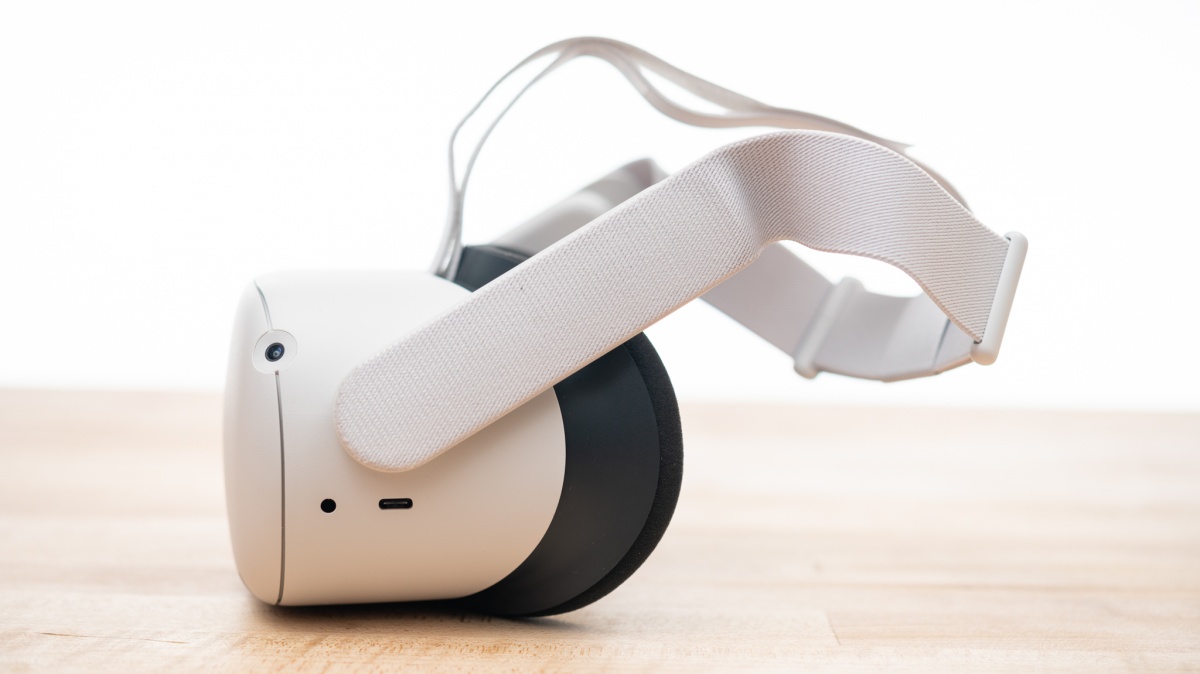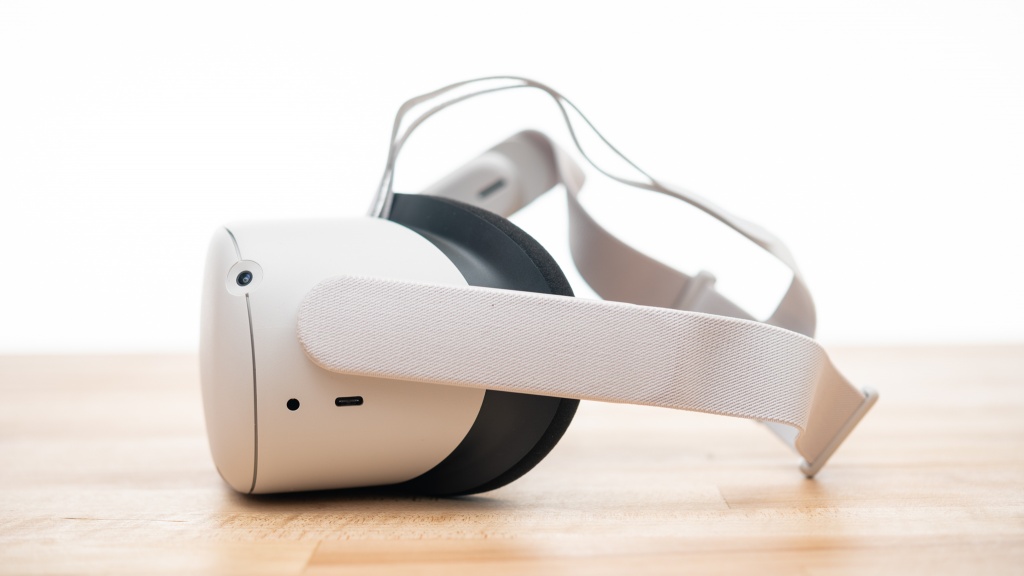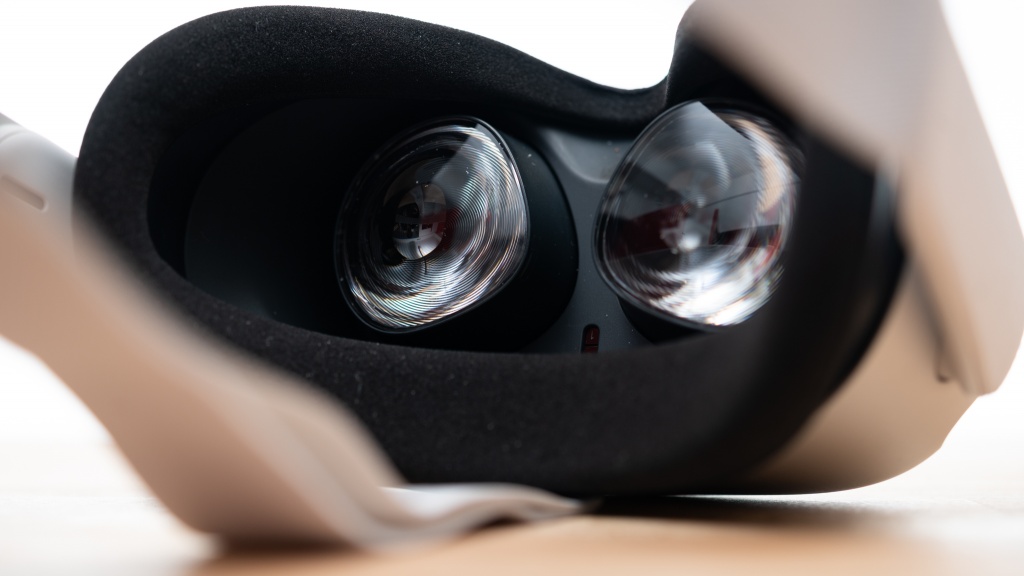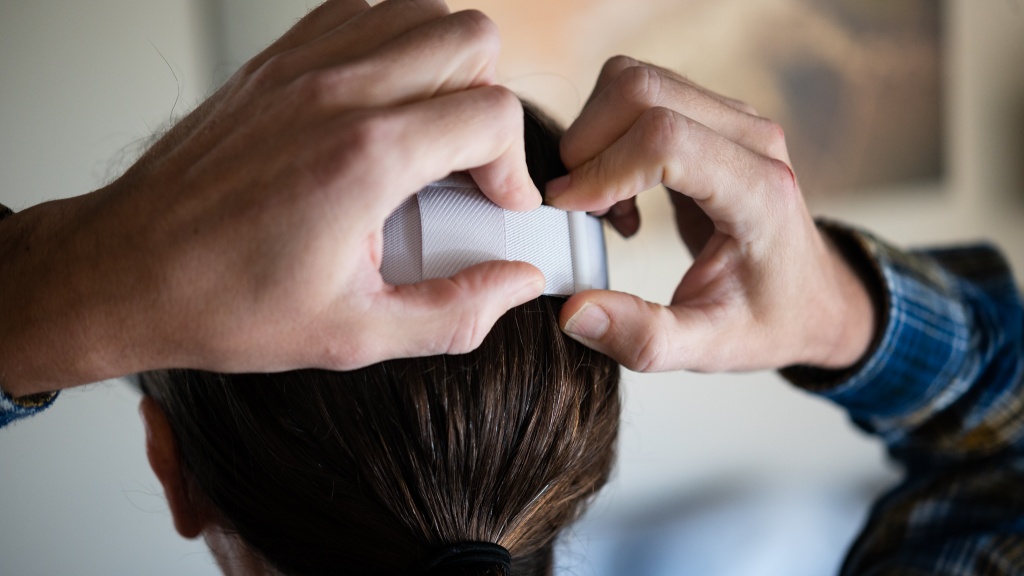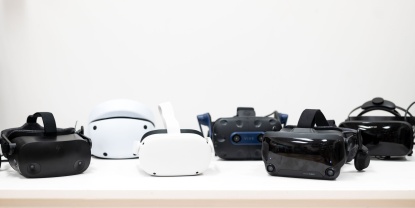Our Verdict
Compare to Similar Products
 This Product
Meta Quest 2 | |||||
|---|---|---|---|---|---|
| Awards | |||||
| Price | $200 List $199.00 at Amazon | $999 List | $550 List Check Price at Amazon | $990 List | $600 List |
Overall Score  |
|||||
| Star Rating | |||||
| Bottom Line | This standalone entry-level headset can access more VR content than any other, thanks to its cross-platform capability | A solid and high-performing VR headset that doesn't require a top-shelf GPU | This great value headset should excite PS5 players looking for upgraded VR immersion | This highly innovative headset may be next-level, but it's short on the basics necessary for mainstream success | This VR headset bundle offers class-leading visuals, solid comfort, and excellent value |
| Rating Categories | Meta Quest 2 | Valve Index | PlayStation VR2 | Varjo Aero | HP Reverb G2 |
| Tracking (35%) | |||||
| Visuals (15%) | |||||
| Comfort (30%) | |||||
| Daily Use (15%) | |||||
| Ease of Setup (5%) | |||||
| Specs | Meta Quest 2 | Valve Index | PlayStation VR2 | Varjo Aero | HP Reverb G2 |
| Measured Weight | 1 lb 1-3/4 oz | 1 lb 13-1/2 oz | 1 lb 5-1/8 oz | 1 lb 11-1/8 oz | 1 lb 8 oz |
| Tracking type | 4 Internal Cameras | External Sensors | 4 Internal Cameras | External Sensors | 4 Internal Cameras |
| Manufacturer Resolution | 1832 x 1920 per eye | 1440 x 1600 per eye | 2000 x 2040 per eye | 2,880 x 2,720 per eye | 2160 x 2160 per eye |
| Manufacturer Refresh Rate | 60, 72, 90 Hz Refresh Rate Supported | 80, 90, 120, 144 Hz | 90, 120 Hz | 90 Hz | 90 Hz |
| Manufacturer Field of View | 100º | Optimized eye relief adjustment allows a typical user experience 20º more than the HTC Vive | 110º | 115° | 114º |
| IPD Adjustment | 3 Settings: 1) 58mm (61mm or smaller) 2) 63mm (61mm to 66mm) 3) 68mm (66mm or larger) |
Mechanical IPD: 58 - 70mm | Mechanical IPD: 57-73mm *Rough measurement |
Automatic IPD: 57–73 mm | Mechanical IPD: 60-68mm |
| Sound | Built-in headband 3.5 mm audio port optional |
Built-in, 37.5mm off-ear | 3.5 mm port, included earbuds Bluetooth connected via the Console |
3.5 mm port, included earbuds | Built-in, off-ear |
| Connection Type to PC | Stand alone (Optional Link Cable: USB-C) |
- DisplayPort 1.2
|
- USB-C | - DisplayPort
|
- DisplayPort 1.3 (DP to mini-DP adapter included)
|
| Room For Glasses? | Slightly Below Average | Below average | Excellent | Average | Average |
| Manufacturer Minimum PC Specs | N/A | OS: Windows 10 Processor: Dual Core with Hyper-Threading Memory: 8 GB RAM Network: Broadband Internet connection Additional Notes: Available DisplayPort (Version 1.2) and USB (2.0+) Port Required |
N/A Uses PS5 | See Manufacturer Recommended PC Specs | OS: Windows 10 May 2019 update or later Processor: Intel Core i5, i7, Intel Xeon E3-1240 v5, equivalent or better or AMD Ryzen 5 equivalent or better Memory: 8 GB RAM or more Video Output: DisplayPort 1.3 |
| Manufacturer Minimum GPU | N/A | NVIDIA GeForce GTX 970, AMD RX480 | N/A Uses PS5 | NVIDIA GeForce RTX 4060Ti, NVIDIA GeForce RTX 3050, NVIDIA GeForce RTX 2060, NVIDIA RTX A2000, NVIDIA Quadro RTX 4000 Aero is compatible with NVIDIA GeForce RTX 20- and 30-series GPUs that meet the minimum requirements. Note that AMD graphics cards are currently not supported. |
NVIDIA GeForce GTX 1080 or AMD Radeon RX 5700 |
| Manufacturer Recommended PC Specs | Optional Link Cable Setup OS: Windows 10 / Windows 11 Processor: Intel i5-4590 / AMD Ryzen 5 1500X or greater Memory: 8 GB+ RAM Desktop App |
Processor: Quad Core + Additional Notes: Available USB (3.0+) Port Required for Headset Pass-Through Camera & USB Port Support |
N/A Uses PS5 | OS: Windows 10 (64-bit) / Windows 11 Processor: 4-core CPU One of the following or better: Intel Core i5-4590, Intel Xeon E5-1620, AMD Ryzen 5 1500X Memory: 8 GB RAM Video output: 1 x DisplayPort 1.4 USB connectivity: 1 x USB-A 3.0 / 3.1 |
Better than Minimum Specs |
| Manufacturer Recommended GPU | Optional Link Cable Setup Supported GPUs: NVIDIA Titan X, NVIDIA GeForce GTX 970, NVIDIA GeForce GTX 1060 Desktop 6GB, NVIDIA GeForce GTX 1070(all), NVIDIA GeForce GTX 1080(all), NVIDIA GeForce GTX 1650 Super, NVIDIA GeForce GTX 1660, NVIDIA GeForce GTX 1660 TI, NVIDIA GeForce RTX 20-series (all), NVIDIA GeForce RTX 30-series Please Note: NVIDIA 3050 (laptop) and 3050ti GPUs are not recommended for use with Link. AMD 400 Series, AMD 500 Series, AMD 5000 Series, AMD 6000 Series, AMD Vega Series Please note: the Radeon RX 6500 is not recommended for use with Link. |
NVIDIA GeForce GTX 1070 or better | N/A Uses PS5 | NVIDIA GeForce RTX 4070Ti, NVIDIA GeForce RTX 3070, NVIDIA GeForce RTX 2080, NVIDIA RTX 6000 Ada, NVIDIA RTX A4000, NVIDIA Quadro RTX 5000 Aero is compatible with NVIDIA GeForce RTX 20- and 30-series GPUs that meet the minimum requirements. Note that AMD graphics cards are currently not supported. |
Full Resolution: NVIDIA GeForce GTX 1080, NVIDIA GeForce GTX 1080 Ti, NVIDIA GeForce RTX 2060 SUPER, NVIDIA GeForce RTX 2070, NVIDIA GeForce RTX 2070 SUPER, NVIDIA GeForce RTX 2080, NVIDIA GeForce RTX 2080 SUPER, NVIDIA GeForce 2080 Ti, NVIDIA GeForce RTX 3070, NVIDIA GeForce RTX 3080, NVIDIA GeForce RTX 3090 AMD Radeon RX 5700, AMD Radeon RX 5700 XT, AMD Radeon 7, AMD Radeon RX 6800 XT, AMD Radeon RX 6900 XT Half Resolution: NVIDIA GeForce GTX 1060, NVIDIA GeForce GTX 1660, NVIDIA GeForce GTX 1660ti, NVIDIA GeForce GTX 1070, NVIDIA® GeForce RTX 2060 AMD Radeon RX 580, AMD Radeon RX 5500XT, AMD Radeon RX 590, AMD Radeon RX 5600 XT, AMD Radeon RX Vega56, AMD Radeon RX Vega6 |
| Hardware Platform | Stand alone (optional tether to VR ready PC) |
PC | PS5 (PlayStation 5) | PC | PC |
Our Analysis and Test Results
The Meta Quest 2 stands apart from all the other VR headsets we reviewed for its value and versatility. It can be purchased with 128GB or 256GB of storage and comes with everything you need to get started in VR at under half the cost of the average VR kit. No other VR headset can draw from as much content as the Quest 2 because of its unique duality as a standalone headset that can be connected to a PC for access to separate Meta and Steam VR stores.
Performance Comparison
Tracking
We used this metric to analyze the responsiveness and accuracy of in-VR motion for headsets and their controllers. The Quest 2's tracking is adequate, considering its low price and standalone niche, but it falls short of the precision and consistency of all other VR kits, especially those with external sensor units.
The Quest 2 is the only headset in our review that is truly standalone, requiring no PC or console and no external sensors to play. In fact, you can even navigate some Quest 2 interfaces and experiences completely free of controllers as the headset picks up hand movements and gestures, such as touching your thumb and index finger together, to click on UI elements. Since the vast majority of current games and VR experiences do, however, require motion controllers, we conducted our tests using the two that came bundled with the headset. And while the Quest 2 can be tethered to a VR-ready PC to partake of the Meta and Steam game libraries, our testing for this metric focused on the standalone applications that run natively on the headset — namely our go-to rhythm game port, Beat Saber.
Tracking in the Quest version of Beat Saber is fine overall, but there is frequent inconsistency in the 360° songs that require panning the headset around for quick motion controller work or hitting notes that are far away. Usually, we'd caution players with competitive ambitions against hardware with this shortcoming, but since the Quest version of Beat Saber has its own leaderboard in its own sandbox, the playing field should be pretty level. However, if you want the ultimate rhythm game experience, then you should skip Quest 2 and consider a VR kit with external motion sensors for more precision.
To conclude with some positive notes, Quest 2 tracks through darker environments better than many headsets and has an impressive controller tracking range out to the far edges of the headset's periphery. The controllers feel nice in hand and feature several capacitive touch sensors and six degrees of freedom (6 DoF) tracking. They are each powered by an AA battery and rated for 30 hours of playtime.
Comfort
Our Comfort metric weighs in on the overall heft, material choices, and design aspects that contribute to or detract from the headset's comfort level during play. The Quest 2 weighs in around 1lb 2oz and feels front-loaded, as it lacks any back-of-the-head support to counterbalance the weight of the visor. The facial fit of the visor mask is excellent, but we found its cloth covering abrasive against our skin.
The Quest 2 has a more minimal strap design than most headsets. As a result, it cannot keep the unbalanced visor from swinging around during quick head pans. To minimize this and keep the headset from moving around and colliding with our noses, we had to overtighten the top and side straps, which detracted from the headset's comfort level.
The Quest 2 stays cool compared to competitors, but it's not miles better, and, like most headsets, pairing it with glasses can be a crapshoot. Meta addresses this issue by including a glasses spacer, but even that didn't work wonders for our frames. The tight fit did not encourage long play sessions, but your mileage may vary, depending on your face shape and spectacles.
Visuals
The Quest 2 scores lower in this metric than the other headsets in our review, but that doesn't mean it is incapable of an impressive VR experience, especially at the entry level.
The Quest 2 has a respectable resolution of 1832 X 1920 per eye, with up to a 90hz refresh rate and a claimed FOV of 100 degrees. In our testing, we measured up to 95 degrees FOV, but remember how that varies based on facial structure and the distance between the user's eyes and the headset's lenses. The Quest 2 features three switch-toggled interpupillary distance (IPD) settings (58mm, 63mm,68mm) from the bottom of the visor. IPD refers to the distance between the center of your eyes, and the more optimized your headset is for that number, the better for your VR immersion. Having three presets isn't awful if your IPD is close to one of those, but we prefer a more linear adjustment method.
The screen door effect (SDE), where the human eye picks up the space between pixels and appears as if looking through a mesh screen, was less noticeable on the Quest 2 version of Beat Saber than some other headsets. However, we had more trouble reading text on this headset than with others in our Realovirtual Workshop tests.
To reiterate: While the Quest 2 scores dead last in our visuals metric, it still offers a worthwhile experience at its price point, especially as problems like low FOV, high SDE, and underwhelming screen stats tend to fade away when you find yourself immersed in any good VR experience.
Daily Use
For this metric, we looked at each headset's wearability, user experience, and general interface. The Quest 2 performed above average in daily use but was not without fault.
Getting a proper initial fit on the Quest 2 can be tricky because it's so front-heavy and wants to fall off your face. We needed to snug up the top and side elastic bands with velcro and plastic friction sliders, which is done most efficiently with the headset off the head through trial and error. Similarly, setting up the correct IPD for the first time can be a hassle as you experiment with visor placement and the three IPD settings that are toggled from a switch on the bottom of the visor.
Once correctly fitted, though, the Quest 2 is one of the most convenient headsets for repeat use, as it easily slides on and off with no bulky padding, finicky dials, or annoying headphones to impede it. Sound comes from speakers tightly integrated into the head strap and can get loud. In fact, others around you will be able to hear what you're hearing because this earphone-free design has no sound isolation. The built-in mic sounds crisp and clear, but sometimes, it will pick up audio from the unisolated speakers, which might be an annoyance to friends or foes in multiplayer games.
Ease of Setup
In our setup metric we look into each VR headset's initial setup process and look into additional hardware and PC requirements. The Quest 2 handily beats out all competition here thanks to its PC, wire, and external sensor-free capabilities.
The setup is very straightforward. Ensure the headset has enough battery charge, strap it on, and follow the on-screen prompts. The Guardian barrier setup is simpler than all other systems we've tested. You outline your preferred play area with the controllers while looking into your play space through the AR camera view. Next, connect to a Wi-Fi network, set up a Meta account, or sign in with your Facebook/Instagram ID.
As for the PC hardware requirements, Quest 2 needs no PC to function as a standalone system but can connect to a VR-ready PC with a minimum of an Intel i5, 8GB RAM, and a GTX 970 or equivalent graphics card.
Should You Buy the Meta Quest 2?
The Meta Quest 2 is a versatile entry-level value buy that will give you access to more VR content than any other VR headset we've reviewed. It's an excellent choice for anyone looking to get into PC-VR without breaking the bank or those curious about the Metaverse. However, those seeking competitive tracking performance or enhanced visual immersion should consider the more premium VR Headset offerings.
What Other VR Headset Should You Consider?
If you want a VR experience a few notches up from the Quest 2's standalone capability but don't want a VR-ready PC's complexity, consider the PS5 console paired with the PlayStation VR2 headset. If you seek an excellent VR headset for PC-VR titles, check out the Valve Index.


